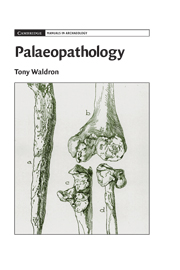Book contents
- Frontmatter
- Contents
- List of Figures
- Preface
- 1 Introduction and Diagnosis
- 2 Bone Metabolism and Pathology
- 3 Diseases of Joints, Part 1
- 4 Diseases of Joints, Part 2
- 5 Bone forming and DISH
- 6 Infectious Diseases
- 7 Metabolic Diseases
- 8 Trauma
- 9 Tumours
- 10 Disorders of Growth and Development
- 11 Soft Tissue Diseases
- 12 Dental Disease
- 13 An Introduction to Epidemiology
- Select Bibliography
- Index
- References
2 - Bone Metabolism and Pathology
Published online by Cambridge University Press: 05 June 2012
- Frontmatter
- Contents
- List of Figures
- Preface
- 1 Introduction and Diagnosis
- 2 Bone Metabolism and Pathology
- 3 Diseases of Joints, Part 1
- 4 Diseases of Joints, Part 2
- 5 Bone forming and DISH
- 6 Infectious Diseases
- 7 Metabolic Diseases
- 8 Trauma
- 9 Tumours
- 10 Disorders of Growth and Development
- 11 Soft Tissue Diseases
- 12 Dental Disease
- 13 An Introduction to Epidemiology
- Select Bibliography
- Index
- References
Summary
The majority of bones in the skeleton first appear in the fetus as cartilage models that calcify and ossify. The exceptions to this are the bones of the cranial vault and the clavicles, the primordal of which are formed by mesenchymal cells. Long bones grow in length at the growth plates situated at the junction of the shaft (diaphysis) and the ends of the bone (the epiphyses). Circumferential growth is achieved by the laying down of bone beneath the periosteum which covers the entire outer surface of all bones except that covered by articular cartilage. Bone is also laid down under the endosteum, which lines the inner surface of the bones. The entire process from cartilage formation, calcification, mineralisation, joint formation and remodelling is controlled by a plethora of genetic and molecular systems which are still by no means completely understood.
TYPES OF BONE
Macroscopically, two types of bone can be distinguished in the skeleton, dense cortical (or compact) bone, such as forms the shaft of the femur and the humerus, for example, and cancellous (or spongy) bone, which occupies inter alia the ends of the long bones and the vertebral bodies. Cancellous bone is formed from trabeculae, bars and plates of bone arranged in a honeycomb manner which convey considerable strength to the region of the bone containing them, but also provides a huge surface area for metabolic reactions.
- Type
- Chapter
- Information
- Palaeopathology , pp. 12 - 23Publisher: Cambridge University PressPrint publication year: 2008



